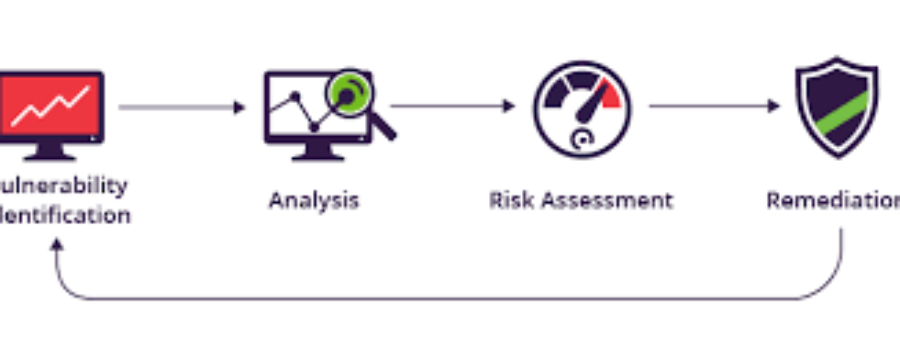Table of Contents
Introduction
With hackers becoming more sophisticated, it’s imperative for organizations to prioritize the security of their assets with vulnerability assessments. One powerful tool that can help businesses in this endeavor is performing regular and comprehensive network scans.
Vulnerability scans are an essential component of an organization’s information security toolkit. Not only are they cost-effective, but they are also mandated by various security frameworks. It is no wonder that many businesses have adopted them as a standard practice. However, simply conducting occasional external scans to meet regulatory obligations is no longer sufficient.
Vulnerability Management Scenario
Regular vulnerability scanning and diligent remediation efforts are essential safeguards against data breaches. Consider a scenario where a global financial institution conducts weekly vulnerability scans across its extensive network of servers, databases, and applications. During one of these routine scans, a critical security vulnerability is detected in a key customer database server. The vulnerability scanning tool immediately notifies the security team, triggering an urgent response. The team swiftly patches the server, isolates it from the network to prevent any potential exploitation, and then conducts extensive testing to ensure the fix is effective and does not disrupt operations.
This proactive approach prevents a cybercriminal from exploiting the vulnerability to gain unauthorized access to sensitive customer financial data, ultimately safeguarding the institution’s reputation and preserving the trust of its clients. Regular scanning and timely remediation prove to be the organization’s first line of defense, stopping data breaches before they can occur and demonstrating a commitment to data security.
Great! We’ve seen a scenario in how vulnerability management could proactively avoid a data breach and other potential damages. Now let’s imagine a scenario where this isn’t the case.
Imagine a small e-commerce startup that, in its eagerness to grow rapidly, neglects cybersecurity best practices. Without regular vulnerability scanning in place, the company’s website and customer database are left unchecked for vulnerabilities over an extended period. Unbeknownst to the company, a hacker identifies a weakness in their website’s payment processing system, exploiting it to gain access to sensitive customer payment information.
This data breach results in severe financial losses, reputation damage, and a loss of customer trust. Without regular vulnerability scanning and remediation, the business is caught off guard, and the breach reveals the high cost of neglecting essential cybersecurity measures, highlighting the importance of proactive security practices in the digital age.
Now that the scene is set for how things can play out, let’s continue into our deep dive.
Dangers Of Irregular Scans
While external scans mandated by regulations are important for identifying vulnerabilities on the perimeter of a network, they only provide a partial view of the overall security posture. Neglecting internal vulnerability scans is a mistake that can leave organizations exposed to potential attacks. Many businesses often focus solely on their production assets, ignoring the potential vulnerabilities that end-user workstations and non-production assets may present.
The consequence of this negligence is a significant expansion of the attack surface for potential criminals. By not regularly conducting internal scans, businesses unknowingly expose themselves to a myriad of risks. Exploiting these vulnerabilities, attackers can infiltrate the network, pivot to less secure devices, compromise sensitive information, and disrupt critical operations.
According to Tenable, there were an estimated 25,080 new vulnerabilities discovered in 2022. Of these vulnerabilities, there were at least 565 exploits made public to take advantage of these, which constitutes 2.25% of all known exploits. That averages out to nearly 69 new vulnerabilities every single day, and if companies aren’t actively scanning their infrastructure, it’s impossible to keep systems properly patched and free of exploits.
Agent Based Vulnerability Assessments
Fortunately, modern technology has made it easier than ever to conduct comprehensive vulnerability scans. Tools such as Tenable/Nessus, Rapid7 InsightVM, Qualys or even an open-source solution like OpenVAS enable organizations to schedule scans with detailed reports for remediation.
These platforms often offer agent-based vulnerability scans that operate in real-time. By continuously scanning and uploading results to a centralized console, businesses can maintain visibility into vulnerable areas that traditional scanners may miss. See the below graphic from Tenable on how traditional scanning differs from agent-based scanning from an architectural perspective.
In addition to being cost-effective, these agent-based scans require minimal computational resources. Furthermore, they not only identify vulnerabilities but also detect emerging trends that could potentially expose businesses to breaches.

Benefits of Comprehensive Scanning
By analyzing scan results over time, organizations can proactively address vulnerabilities before they are exploited, preventing potentially devastating consequences. Perhaps you might realize your Windows machines aren’t applying the latest KBs, your servers in a specific subnet have remained at the same vulnerability count for 3 patch cycles, or a particular user has an abnormally high amount of software vulnerabilities. All of these things can be corrected, given the right conditions for monitoring.
Incorporating these scheduled scans and agent-based vulnerability assessments into an organization’s security strategy is crucial. By doing so, businesses can ensure that they are constantly aware of their attack surface and promptly address any vulnerabilities that may arise. This proactive approach to security minimizes the risk of falling victim to cyber attacks and demonstrates a commitment to safeguarding sensitive information.
Moreover, regular and comprehensive vulnerability scanning plays a pivotal role in compliance with various industry regulations and standards. Many regulatory frameworks require organizations to perform vulnerability scans on a regular basis, such as HIPAA, PCI-DSS and SOC2. By adhering to these requirements, businesses demonstrate their commitment to maintaining a robust security posture and fostering trust among their stakeholders.
Conclusion
In conclusion, the importance of running regularly scheduled internal and external vulnerability scans cannot be overstated. Neglecting internal scans and limiting scans to meet minimum regulatory obligations exposes organizations to significant risks. By leveraging modern technologies and implementing scheduled scans, businesses can proactively protect their networks, systems, and critical assets. Regular vulnerability scanning ensures that organizations remain vigilant, identify potential threats before they are exploited, and maintain compliance with regulatory frameworks. It is an indispensable practice in today’s threat landscape and a vital step towards bolstering overall cybersecurity.
If you’re interested in learning how EkoCyber can bolster your vulnerability management efforts, check out our security assessments page, and let us know if you’d like to chat!





